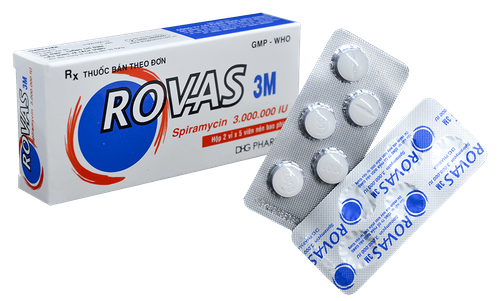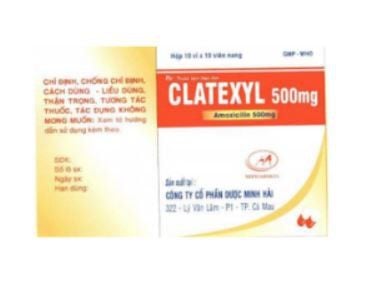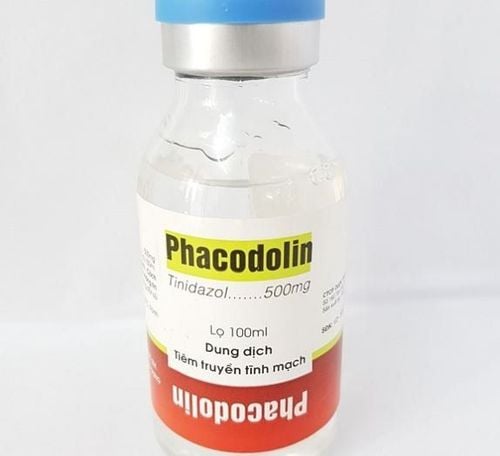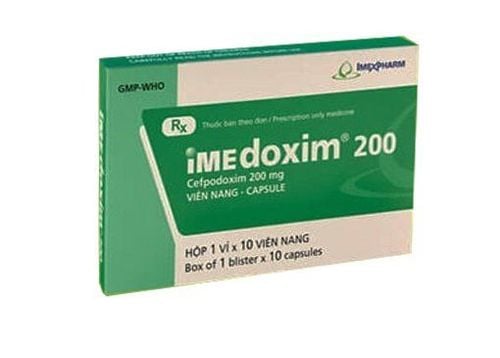This is an automatically translated article.
The article was written by Dr. Vo Ha Bang Suong - Therapist - Department of Medical Examination and Internal Medicine - Vinmec Phu Quoc International General Hospital.Toxoplasmosis is a disease caused by infection with the parasite Toxoplasma gondii, one of the most common parasites in the world. Toxoplasmosis usually occurs from eating undercooked contaminated meat, contact with infected cat feces, or mother-to-child transmission during pregnancy.
1. What is Toxoplasma infection?
Toxoplasma is an organism that lives inside another living organism and is known as a parasite. Toxoplasma is a single-celled parasite. Most people with the condition have no serious health effects, but occasional complications include infections of the eyes, brain, and other organs. The disease only reactivates and is severe in immunocompromised subjects or congenital Toxoplasma2. Where do humans get Toxoplasma from?
Cats The only known host for T. gondii is the Cat family (domestic cats and other cats).Sexual reproduction of T. gondii occurs only in the intestinal tract of cats; As a result, fecal cysts remain infectious in moist soil for many months.
Follicles are excreted in the cat's feces. With each discharge, a large amount will be discharged but usually only for 1-2 weeks. Follicle takes 1-5 days to become sporozoite. Cats are re-infected by swallowing follicles.
Soil, water, plants, or your cat's litter box are sources of follicles. Natural intermediate hosts (eg, birds, rodents, wildlife, meat animals) become infected after ingesting contaminated food.
Humans can become infected by eating undercooked meat containing cyst tissue. People can become infected by ingesting food or water contaminated with cat feces or other fecal-contaminated materials (for example, soil) or by contact with a cat's litter box.
Ingestion of eggs in food or water contaminated with cat feces is the most common mode of oral infection.
Some rare sources of infection Blood transfusion infections; organ transplantation or mother-to-child transmission during pregnancy.
The disease is more common in hot, humid countries, where conditions are more favorable for the survival of cysts.

Nguồn lây nhiễm Toxoplasma phổ biến là mèo.
3. Who is at high risk for Toxoplasma infection?
Anyone can get Toxoplasma. When the immune system is good, there are absolutely no symptoms. Disease reactivation in immunocompromised subjects such as HIV infection, cancer or after cancer treatment.Congenital infections caused by maternal transmission during pregnancy have severe manifestations.
4. Manifestations of Toxoplasma infection
Toxoplasma infection can manifest in several ways:Acute Toxoplasmosis. Central nervous system disease caused by Toxoplasma. Congenital Toxoplasmosis. Toxoplasmosis of the eye. Diffuse or extra-CNS disease is seen in immunocompromised patients. 4.1. Acute Toxoplasmosis Acute infection is usually asymptomatic but in 10 to 20% of patients there are painless, bilateral cervical or axillary lymphadenopathy. Some of these also have flu-like symptoms, low-grade fever, malaise, myalgia, hepatosplenomegaly, and some less common symptoms such as pharyngitis, pseudomonocytosis, and lymphadenopathy. Atypical lymphocytosis, mild anemia, leukopenia, and mild elevation of liver enzymes are common. This syndrome can persist for weeks but almost always resolves on its own.
4.2. Toxoplasma disease in the central nervous system Most patients with AIDS or immunocompromised patients present with Toxoplasmosis as encephalitis and ring-ring lesions on CT brain scans. The risk is greatest for people with CD4 <50/μL; Toxoplasma encephalitis very rarely CD4 count > 200/μL. Typical patient symptoms are headache, mental changes, cerebral hemorrhage, coma, fever, and occasionally localized neurologic deficits such as loss of movement or sensation, cranial nerve palsies, visual disturbances, and cerebrovascular accident.
4.3. Congenital Toxoplasmosis This is the result of a primary infection. Women infected before conception do not normally transmit toxoplasma to their fetus unless the infection is reactivated during pregnancy by immunosuppression. Miscarriage, stillbirth, or birth defects may occur. The percentage of surviving fetuses born with toxoplasmosis depends on when the mother's infection was acquired; increased from 15% in the first trimester to 30% in the second and to 60% in the third trimester.
Neonatal illness can be severe, especially if the baby is infected early in pregnancy; Symptoms include jaundice, rash, hepatosplenomegaly and four unusual features:
Bilateral retinitis. Brain calcification. Hydrocephalus or microcephaly. Mental retardation. Toxoplasmosis in children has a poor prognosis. Many children with mild illness and most babies born to infected mothers during the third trimester of pregnancy are healthy at birth but are at high risk for seizures, intellectual impairment, retinitis, or other symptoms. Others appear months or even years later.
4.4. Toxoplasmosis of the eye The result of congenital infection is reactivated, usually in adolescents and 20 years of age but rarely with acquired infections. Necrotizing retinitis and secondary granulomatous choroiditis occur and can cause eye pain, blurred vision, and sometimes blindness. Rates of recurrence with the disease are common.
4.5. Diffuse and extra-CNS infections Extraocular and CNS diseases are less common and occur mainly in severely immunocompromised patients. They can be pneumonia, myocarditis, polymyositis, diffuse rash, high fever, chills, and weakness.
In toxoplasmosis, diffuse interstitial infiltrates can progress rapidly and cause respiratory failure, whereas endovascular inflammation can lead to infarction of small pulmonary vessels. In myocarditis, conduction defects are common but often asymptomatic, which can rapidly lead to heart failure. The disease, if left untreated, is often fatal.

Nhiễm Toxaplasma có thể biểu hiện ở mắt, nhiễm trùng lan tỏa,...
5. How is Toxoplasma infection diagnosed?
If Toxoplasma infection is suspected, a blood test is necessary.5.1. Serological tests: Toxoplasmosis is usually diagnosed by serology, using laboratory measures to detect the body's IgM, IgG antibodies to toxoplasma. IgM antibodies usually appear during the first 2 weeks of acute illness, peak within 4 to 8 weeks, and become negative thereafter, but they can also persist for up to 18 months after acute infection. IgG antibodies arise more slowly, peak in 1 to 2 months, and can remain elevated and stable for months to years.
The diagnosis of acute toxoplasmosis during pregnancy and in the fetus or neonate can be very difficult. Detection of infant-specific IgM antibodies suggests congenital infection. Maternal IgG crosses the placenta, but IgM does not. Detection of specific IgA antibody Toxoplasma is more sensitive than IgM in congenitally infected infants but it is only available in special reference institutions.
5.2. PCR tests Determination of the parasite's DNA in blood, cerebrospinal fluid, or amniotic fluid is available from a number of reference laboratories. PCR-based amniotic fluid analysis is the method of choice for the diagnosis of toxoplasmosis in pregnancy.
5.3. Other supportive techniques For diseases in the central nervous system, cranial CT or MRI and lumbar puncture are applied. Histopathological evaluation of the biopsy. Ocular disease is diagnosed based on the appearance of ocular lesions, symptoms, disease course, and serological test results.
6. Is Toxoplasma infection treatable?
Treatment of Toxoplasmosis is not indicated in immunocompromised patients who are asymptomatic or have mild, uncomplicated acute infections. Treatment is only required when visceral disease is present or symptoms are severe or persistent.However, specific treatment is indicated for the following acute toxoplasmosis:
Neonates. Pregnant women with acute toxoplasmosis. Immunocompromised patients. 6.1. Treatment of immunocompromised patients The most effective regimen in non-immunocompromised patients is pyrimethamine plus sulfadiazine. Dosage:
Pyrimethamine: 100mg on day 1; then 25 to 50 mg once/day for 2 to 4 weeks in adults (2 mg/kg orally for 2 days, then 1 mg/kg once/day in children, up to 25 mg/day). Sulfadiazine: 1g orally 4 times a day for 2 to 4 weeks in adults (25 to 50 mg/kg children). Leucovorin is given concurrently to help protect against bone marrow. In patients with hypersensitivity to Sulfadiazine, clindamycin 600-800 mg/day was given with pyrimethamine instead of Sulfadiazine. Another option is Atovaquone 1500 mg every 12 hours plus pyrimethamine.
6.2. Treatment of immunocompromised patients Higher doses of pyrimethamine are used in HIV-infected patients with cerebral toxoplasmosis. A loading dose of pyrimethamine 200 mg is given on the first day, then 50 to 100 mg/day plus sulfadiazine for at least 6 weeks. Bone marrow suppression with pyrimethamine can be minimized with leucovorin (also called folinic acid, not folate, which reduces the therapeutic effect). Dosage is 10 to 25 mg orally once a day (7.5 mg once a day in children). Even with leucovorin, white blood cell counts must be monitored weekly.
ART should be optimized in patients with concomitant HIV/AIDS or other infections. Recurrence of toxoplasmosis is common in AIDS patients; Maintenance therapy should continue indefinitely unless the CD4 count increases and remains > 200/μL and the patient remains asymptomatic for > 3 months.
6.3. Treatment of ocular toxoplasmosis Treatment of glaucoma is based on the results of a comprehensive evaluation of the eye (inflammation, degree of vision, size, location, and persistence of the lesion). Dosage for pyrimethamine, sulfadiazine, and leucovorin is similar to that of immunocompromised patients. The CDC recommends that ocular toxoplasmosis therapy be continued for 4 to 6 weeks, after which the patient's condition should be reassessed.
Patients with ocular toxoplasma are also often given corticosteroids to reduce inflammation.

Bệnh nhân nhiễm Toxoplasma ở mắt thường được dùng corticosteroid để giảm viêm.
Spiramycin 1g/day orally 3 to 4 times/day has been safely recommended to reduce transmission in pregnant women during the first trimester of pregnancy but spiramycin is less active than pyrimethamine, sulfadiazine and does not cross the placenta pregnant. Spiramycin was continued until fetal infection was documented or stopped at the end of the first month of pregnancy. PCR test of amniotic fluid at 18 weeks of pregnancy to determine whether the fetus is infected or not. If no transmission occurs, spiramycin can be continued during pregnancy. If the fetus is infected, pyrimethamine plus sulfadiazine and leucovorin are used during the second and third trimesters of pregnancy.
6.5. Treatment of neonates with congenital toxoplasmosis Infants with congenital toxoplasmosis should be treated with pyrimethamine every 2 to 3 days and with sulfadiazine once a day for 1 year. Neonates should also receive leucovorin while receiving pyrimethamine and for 1 week after stopping pyrimethamine to prevent bone marrow destruction.
7. How to prevent Toxoplasma infection?
Thorough hand washing after handling meat, soil, or cats is essential. Food that may be contaminated with cat feces should be avoided. You should also consume cooked meat products.Pregnant women should avoid contact with cats. If contact is unavoidable, pregnant women should at least avoid cleaning cat litter or wear gloves when doing so to reduce the possibility of infection.
Prophylaxis for HIV and IgG T. gondii-positive patients when CD4 cell counts are < 100/μL. A once-daily trimethoprim/sulfamethoxazole double tablet, which is also a prophylactic against Pneumocystis jiroveci, is recommended.
If this dose is not tolerated, the alternative is one double tablet taken 3 times a week or one tablet daily. If the patient cannot tolerate trimethoprim - sulfamethoxazole, dapsone plus pyrimethamine and leucovorin can be used. Atovaquone with or without pyrimethamine and leucovorin is another option. Prophylaxis continues until CD4 cell count is > 200/μL for ≥ 3 months.
Please follow the website: Vinmec.com regularly to update many other useful information.
Please dial HOTLINE for more information or register for an appointment HERE. Download MyVinmec app to make appointments faster and to manage your bookings easily.













